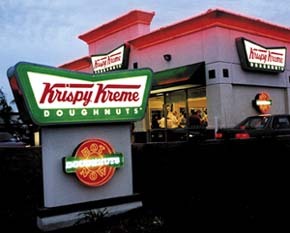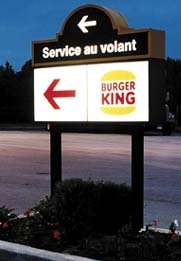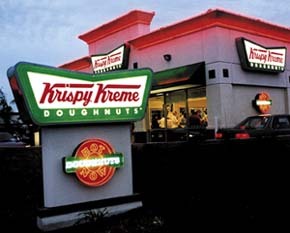Last month, this column suggested ways to enter the electric-sign arena. We recommended focusing on either cabinet displays or individual, illuminated-letter/design displays on a raceway. We mostly based our rationale on the displays’ simplicity of connections to the electric-branch circuit.
Our attention focused on the display’s design, zoning and physical installation — definitely more than enough issues for an entry-level electric-sign company to face. This month’s issues pertain to the sale, ordering and understanding of one of a cabinet sign.
Cabinet-sign creation
A very simple, straightforward display, a cabinet sign has one, two or more plastic (or other type of translucent) faces that are internally illuminated by fluorescent lamps. The faces are retained to a metal frame, usually extruded aluminum. The electrical services to these displays are normally fed by a 120-volt circuit (you remember — a black, white and green conductor).
First, we order the display from a manufacturer/wholesaler. The display must be "listed." "Listing" means that the sign is produced based on certain safety criteria. An electric sign must be "listed," or certified, by a nationally recognized testing laboratory (NRTL),such as Underwriters Laboratories (UL), the Canadian Standards Assn. (CSA), E Testing Laboratories (ETL), MET Electrical Testing Co.(MET), etc. Throughout North America, such listings are required by law.
The National Electrical Code (NEC) book’s 600.3 listing states, "Electric signs and outline lighting — fixed, mobile or portable — shall be listed and installed in conformance with that listing…" This section of the code lawfully precludes people from purchasing a set of components and assembling them haphazardly. These criteria also mandate that no one may alter this finished product without having it re-listed per a given set of criteria.
Next, we examine the face material, which is usually plastic. Typically the first choice for smaller signs, acrylic is a weather-resistant, economical face material. At the other end of the spectrum of polymeric face materials, polycarbonates possess nearly 50 times the strength of acrylic-face materials. Prominent names for polycarbonate blends include Hyzod® and Lexan®. Though they usually cost more, polycarbonate’s vandalism and impact resistance partially compensate for the extra expense and provide a sense of security for inexperienced sign installers.
Advertisement
Somewhere just below the polycarbonates, and far above the acrylic composites, reside high-impact acrylics. Brand names include Acrysteel® (Aristech), Tuf-Glas® and Crylex® (Spartech Plastics). These high-impact acrylics offer outstanding weatherability, as well as thermoforming qualities.
These acrylic hybrids can reduce overall cost while adding value. My sign company mostly used high-impact acrylic for our cabinet signs.
Flat or shaped?
Box-sign faces tend to be designed with flat surfaces. Yet, circumstances may dictate otherwise. Consider light distribution. If a flat face is too close to fluorescent lamps, light and dark striping" may occur. A shaped (or "pan") face will extend at least two additional inches away from the lighting source and render a far more uniform, lit surface.
In terms of strength, think of a flat sheet of tin lying across a roof. Alone, the weak metal offers minimal support. Now, rethink the tin as a corrugated roof. This same concept applies equally to an egg crate or to face material. Including a 2-in. pan in your client’s design will provide that much more assurance of a problem-free, durable project.
Illuminating thoughts
Advertisement
Lamp choice is the next concern. The basic, white, fluorescent lamp goes by many names: Sign White, Snow White, Brite White, Cool White, Daylight, Natural, Warm White, etc. For simplicity, let’s consider two basic hues, cool and daylight white.
Cool whites offer a pinkish hue, while daylight white provides a very stark, white deliverance. I believe daylight lamps give a sign a much brighter and vibrant presence, and more closely transmit the intended face colors. The extra $3-4 per lamp is well worth how they improve the final presentation.
Don’t forget to quote
OK, we’re now ready to call our manufacturer/wholesaler for a quotation to present to the client.Remember, an electric sign must be "listed," or certified by an NRTL, such as UL, CSA, ETL and MET. The listing demonstrates to your client that you aren’t sidestepping necessary requirements.
This sign comprises high-impact acrylic, 2-in.-deep pans and a 2-in. flange. Explain these selections to your client. What are the reasons you used these materials? Ha, you forgot. The pan provides even light to the face surface, and the acrylic imparts more strength and durability. Ask your manufacturer to include daylight lamps with this quote in order to present the truest color quality.


 Photo Gallery2 weeks ago
Photo Gallery2 weeks ago
 Ask Signs of the Times2 weeks ago
Ask Signs of the Times2 weeks ago
 Paula Fargo1 week ago
Paula Fargo1 week ago
 Real Deal5 days ago
Real Deal5 days ago
 Photo Gallery1 week ago
Photo Gallery1 week ago
 Women in Signs2 weeks ago
Women in Signs2 weeks ago
 Women in Signs2 weeks ago
Women in Signs2 weeks ago
 Projects5 days ago
Projects5 days ago

















